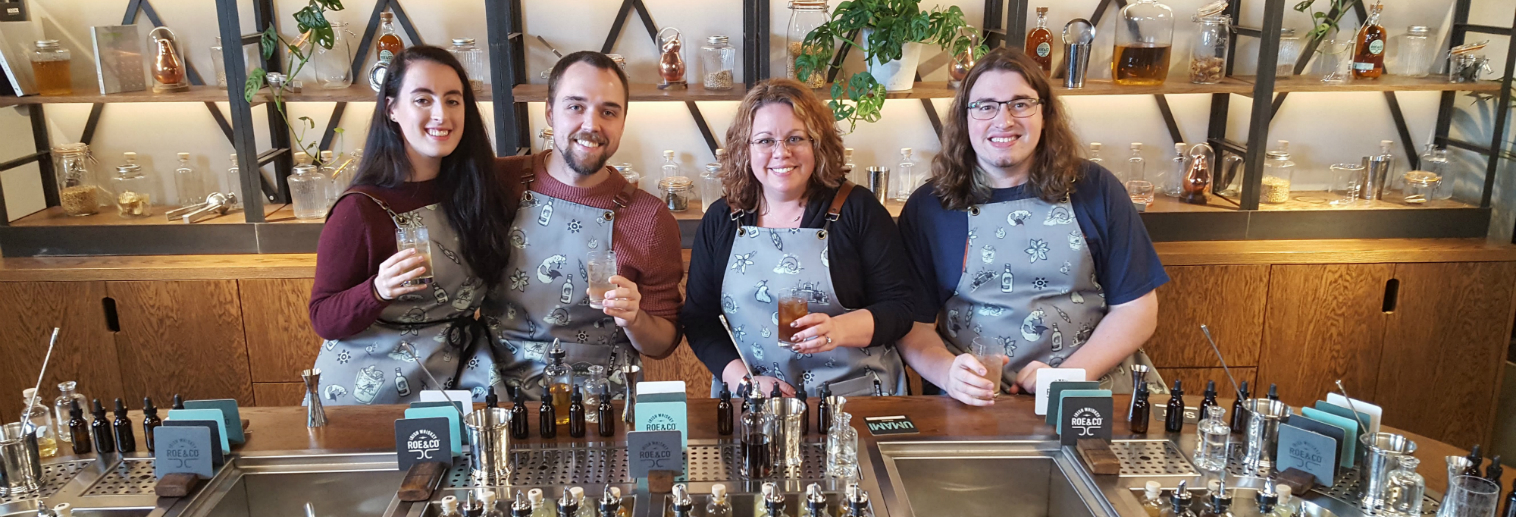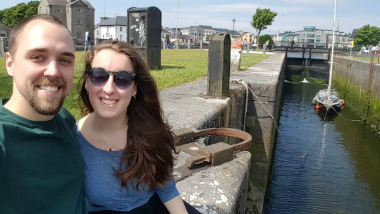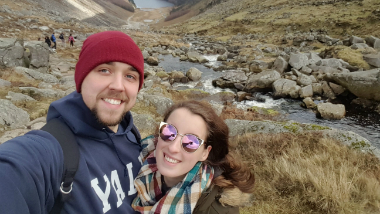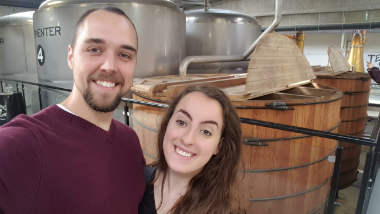
Sampling whiskey at the Roe & Co. Distillery in Dublin: Andrew Watson ’12 (second from left) with his fiancée, Felicity Cushion, and his Moravian College roommate, Rudy Garbely ’12, and wife Carolyn Hoffman
Andrew Watson '12
Dublin, Ireland
Sometimes we follow our heart to new places. Andrew Watson followed his to Ireland.
After dating across the Atlantic for a few years, Andrew Watson ’12 and his now-fiancée, Felicity Cushion, a resident of the UK, decided it was time to live together. Ireland presented a simple solution. Cushion didn’t need a visa since the UK was part of the EU, and Watson was able to get a Working Holiday Authorization, which he later turned into a longer-term visa through his employer. The two have lived in Dublin ever since.
Watson, who earned a BS in physics and mathematics, works for Ireland’s National Institute for Bioprocessing Research and Training (NIBRT), about 20 minutes south of Dublin’s city center. NIBRT trains biologists in how to use equipment specific to the biopharmaceutical industry. The institute also offers contracted research service, and some do pure research.
“My group at NIBRT is sort of unusual in that we don’t really do any biopharma research. We’re developing software—in collaboration with Siemens Ireland—to improve the biopharma manufacturing process,” explains Watson. “Our software makes it easier to gather data from disparate databases, quickly analyze it, and present those results in an intuitive and user-friendly way. The biopharma industry is in the middle of a big push toward digitalization, and Siemens and NIBRT are trying to be at the forefront of that.
Watson finds life in Dublin as rich and engaging as his work.
“I spend about 60 percent of a typical day programming,” Watson adds. “We’re a small team, so we’re all ‘full-stack’ developers—we have to think about everything from the operating system to the database to the user interface. It’s a lot to handle, and I’ve definitely learned a lot in this position.”
Watson finds life in Dublin as rich and engaging as his work. He and Cushion live right in the heart of the city. Within a five-minute walk from their apartment are roughly 40 bars and pubs, restaurants serving all sorts of cuisines—Italian, Japanese, Greek, and more—cafés, theaters, museums, and beautiful old cathedrals. “I think Dublin has a reputation as being conservative and traditional,” says Watson, “but over the last decade or so, it has become a thriving, modern European capital city.
“I think it’s easy to reduce countries or regions or people to stereotypes if you’ve never encountered a different culture,” Watson continues. “But everywhere, people have diverse political views, cultural values, and interests. I’d like to think that Americans understand that not everyone in Ireland likes whiskey and Guinness.”

Watson with his fiancée in Galway.

At Glendalough, a glacial valley just south of Dublin

At the Teeling Distillery in Dublin
